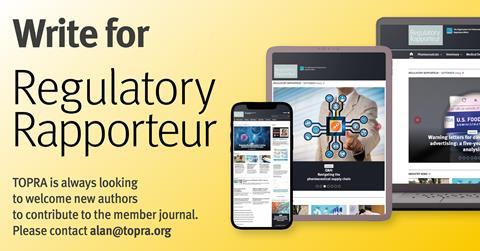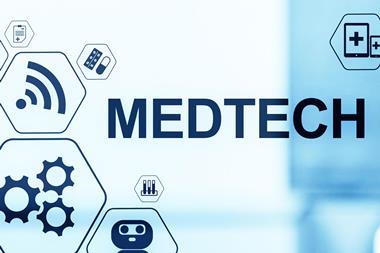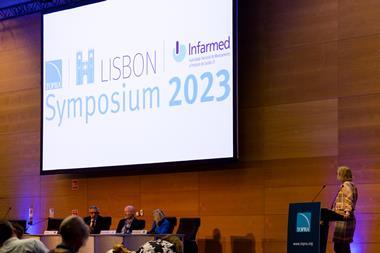
Regulatory Rapporteur
January 2024 | Volume 21 | No.1
The world of biologics is shifting rapidly. In the more than 40 years since the introduction of the first biosynthetic human insulin in 1982, advances in scientific understanding and biotechnology have occurred at breakneck speed. This has resulted in the development of hugely novel products with the potential to give patients greatly improved treatments, ranging from blood, and blood products, to antibodies and antibody-drug-conjugates, to nanoparticle-containing proteins and cell- and gene-based medicines.
Biological products are already regulated separately from traditional pharmaceuticals primarily due to their variability in manufacturing and testing procedures. Not surprisingly, the increasing complexity of their design and manufacture has significant implications for our work as regulatory professionals. Even at the most basic level, although the principles are the same, the definition of these active substances differs across the US and EU, and a further level of consideration comes into play for genetically modified organisms, especially in countries and regions with specific regulation for this class of product.
The greatest challenge with biologicals generally arises with their manufacture which may be straightforward in the first instance, but without careful planning and foresight, what is considered to be suitable and feasible in early development is unlikely to be appropriate for later development and commercialisation. This often leads to further work to demonstrate the comparability of material across development phases with, at worst, the potential for additional non-clinical and clinical studies to bridge any differences and demonstrate clinical comparability.
In addition, it can be difficult to fully characterise the safety of complex biologicals prior to approval. This is particularly so for products that represent a new class, and which are developed and licensed for use in small patient populations, which limits the generation of larger volumes of safety data. The activity / potency of biological products is normally determined by using biological systems which have, historically, been animal models. This has been an area of significant regulatory activity with recent measures to reduce the use of animals, i.e.‘3Rs’ which are the replacement, reduction, and refinement of animals used in research.
FDA staff in particular have been active over the 12-to-18 months in contributing to a series of publications considering alternative methods for many aspects of development, and this is an area which certainly has potential to evolve even more rapidly with the application of artificial intelligence.
All new products including biologics are subjected to rigorous scrutiny by regulators, as evidenced by the FDA’s recent statement on its ongoing oversight of the safety of chimeric antigen receptor T-cell (CAR-T) products following an observation of an increase in secondary malignancies across some of the recently approved oncology products in this space. Of course, such caution is necessary and welcome as to generate additional data and allow for full assessment of any potential risks.
It is widely recognised and accepted that biological products sit in a complex and fast-paced area. Against the backdrop of the current weaker economic climate, in which smaller developers are increasingly being targeted for mergers and acquisitions, it can be difficult for investors and shareholders to know whether to (continue to) invest in a product or company.

As many of these products are groundbreaking, there are often no development ‘rules’, with non-clinical and clinical programmes being designed on a case-by-case basis. As Zeb Younes and Angeles Escarti-Nebot explain, while due diligence is vital for commercial viability assessment, it is equally important that this includes robust regulatory due diligence by regulatory professionals experienced in all phases of development to ensure that critical aspects have been considered and/or addressed in a timely manner and, if not, that the risk can be mitigated.
Following investment, there is then the question of how to further develop the product itself. Where feasible and necessary, a full, early regulatory assessment will be a key driver, and a robust non-clinical strategy is vital. However this must always be science-based and relevant to the product’s characteristics, based on a ‘weight of evidence’ approach, as succinctly summarised by David Jones, and ideally pressure-tested and de-risked via appropriate regulatory agency interactions.
Of course, the challenges don’t end with clinical development. Many of these products are in development for oncology indications. While appearing to pitch at the time of marketing authorisation, the incoming EU Joint Clinical Assessment (JCA) procedure is likely already having a ripple effect on oncology products currently in late-stage clinical development, for which market access considerations should be under consideration/implementation in advance of applicability of the JCA itself in January 2025.
Even then, assuming successful approval and launch, the impact of biosimilars must be factored in. In future, the impact of the Inflation Reduction Act 2022 in the US, which has been positioned to encourage higher adoption of biosimilars, will also need to be considered.
So, where could we go from here? The need for more global harmonisation in the regulation of many products is a common call, and biologicals are absolutely no exception, as summarised by Danielle Helton Corwin and Baily Thomas. This theme continues in an article by Sateesh Babu and colleagues, in which the main issues faced by cell and gene therapy manufacturers are explored, and recommendations provided for mitigation of key factors to ensure a compliant and timely development programme for these highly complex biologicals.
In a further piece, we hear from Katherine Bowen on the changes in oncology development in recent years, where regulatory expectations, especially in the US, are resulting in this traditionally different field moving more towards a general therapeutic area approach. Finally, it would be remiss of us to start a new year without touching upon the most impactful emerging technology of the age: artificial intelligence and its potential use in drug discovery, and the opportunities and risks, this disruptive technology offers, as presented by Paula Maguire, Bruno Speder and Liam Tremble.
In short – it may be a new year, but the usual regulatory challenges remain!


































No comments yet